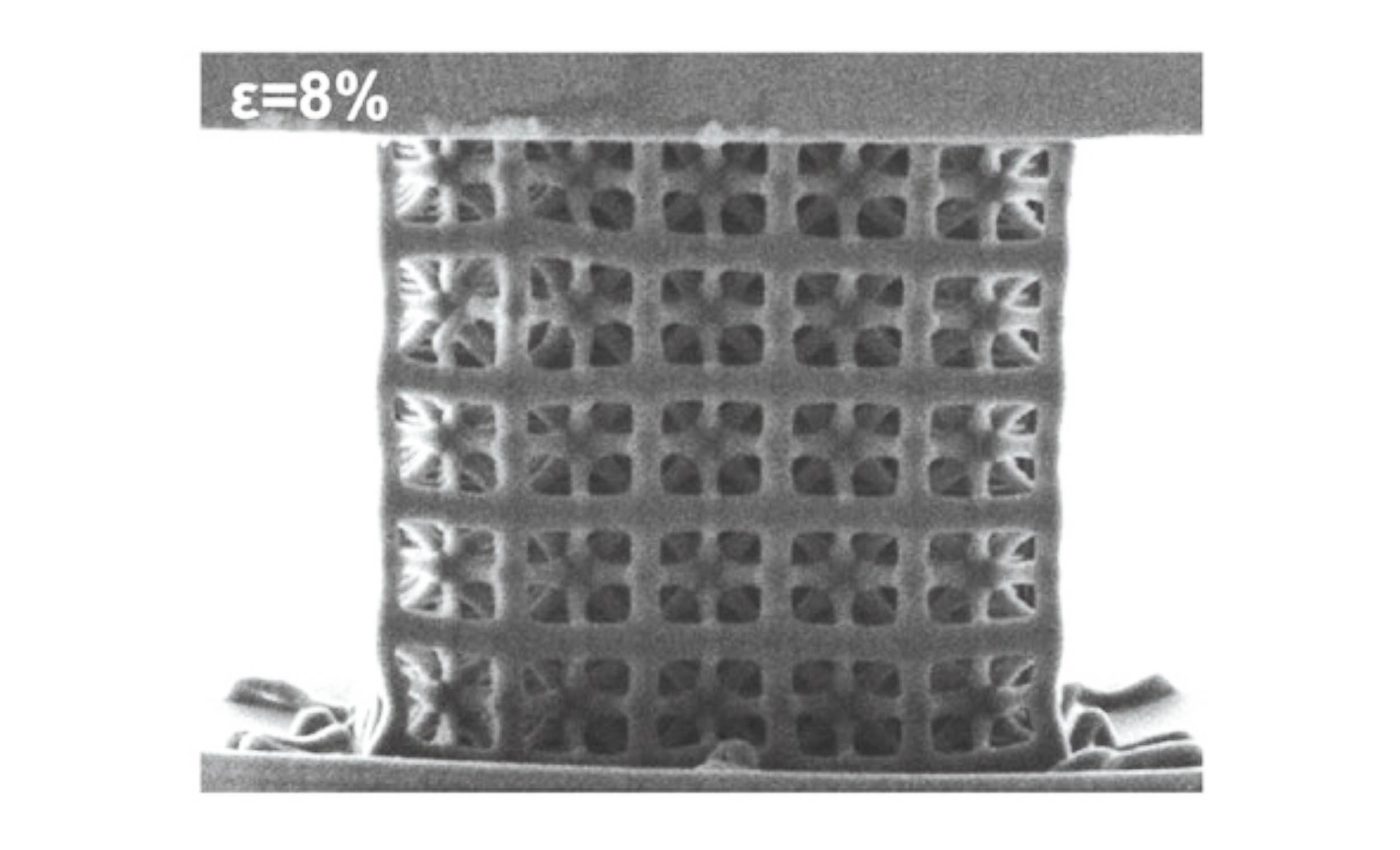
New AI-designed material is light as foam, tough as steel
Researchers have introduced a new material that is as sturdy as steel yet as airy as foam. They harnessed the power of artificial intelligence (AI) and a high-precision 3D printer to fine-tune its shape, aiming for maximum strength without adding weight to the material.
According to the engineers, their invention could have major implications for manufacturing items that require both strength and lightness, particularly vehicles aiming to improve fuel efficiency.
Professor Tobin Filleter from the University of Toronto helped lead this effort, bringing years of expertise in the mechanical behavior of materials.
He and his team worked alongside collaborators who explored ways to build micro-scale structures with precisely arranged features.
Searching for the right shape
The researchers started by testing possible shapes through computer simulations, and attempting to distribute applied stresses evenly.
This meant reducing weak points, which often cause sudden collapses in conventional lightweight structures.
“It didn’t just replicate successful geometries from the training data; it learned from what changes to the shapes worked and what didn’t, enabling it to predict entirely new lattice geometries,” said Peter Serles, an engineering researcher at Caltech.
The planning phase fed a machine learning algorithm that learned how each shape withstood pressure. But, it did more than just rehash old ideas.
Using AI for better material designs
Traditional materials often force a compromise between strength and toughness. Many ceramic-like substances can bear large loads but shatter easily. The team wanted something that balanced both.
They relied on nano-architected designs to reach that sweet spot. By incorporating carefully engineered patterns at the microscopic scale, these structures can achieve higher load capacities than bulk materials of the same density.
Taking advantage of 3D printing
Once the algorithm suggested the best shapes, the researchers used a specialized 3D printer that works with polymers at incredibly fine scales.
Next, they baked these printed lattices to leave behind carbon. The result is a nanolattice that resists high stress without crumbling.

Advanced machines allow delicate features to be printed in a fraction of an inch, which opens doors for more complex geometries. That means scientists can now make shapes they once only imagined in simulations.
AI material for aerospace efficiency
“We hope that these new material designs will eventually lead to ultra-light weight components in aerospace applications, such as planes, helicopters and spacecraft, that can reduce fuel demands during flight while maintaining safety and performance,” said Filleter.
If a craft needs less fuel, emissions decrease, along with operating costs.
One researcher explained that swapping titanium parts for this lighter alternative might yield yearly fuel savings of around 21 gallons for every 2.2 pounds (80 liters for every 10 kilograms) of material replaced. That adds up over multiple flights and repeated journeys across the globe.
Expanding beyond aerospace
While the most obvious applications are in aviation and space travel, other industries could also benefit from these ultra-light, ultra-strong materials.
The automotive sector, for instance, constantly seeks ways to improve fuel efficiency and battery range in electric vehicles. Lighter chassis and structural components could make a meaningful impact on performance.
Medical technology is another promising area. Researchers are exploring how these nano-architected materials might lead to stronger yet lightweight prosthetics, implants, and medical devices.
Reducing material weight while maintaining strength could make wearable medical gear more comfortable and effective.
Scaling up and moving forward
The next challenge is to produce larger pieces without losing the benefits seen in the lab. Figuring out how to manufacture greater volumes of this carbon-based structure at a reasonable cost is high on the agenda.
Engineers also plan to experiment with variations that maintain stiffness while shaving off more weight.
Each new design is another opportunity for the algorithm to refine its predictive skills, potentially raising strength limits even further.
AI-designed material and the future
These new insights are part of an ongoing effort to rethink how materials perform. Weight reduction is a key goal for many industries, from auto manufacturing to wind turbine construction, and this work offers a powerful tool to meet those needs.
Bringing AI into the materials world shows that old boundaries can sometimes be pushed aside. Once scaled up, these next-generation structures might show up in unexpected places, providing safety without the usual weight penalty.
The study was published in the online journal Advanced Materials.
—–
Like what you read? Subscribe to our newsletter for engaging articles, exclusive content, and the latest updates.
Check us out on EarthSnap, a free app brought to you by Eric Ralls and Earth.com.
—–













